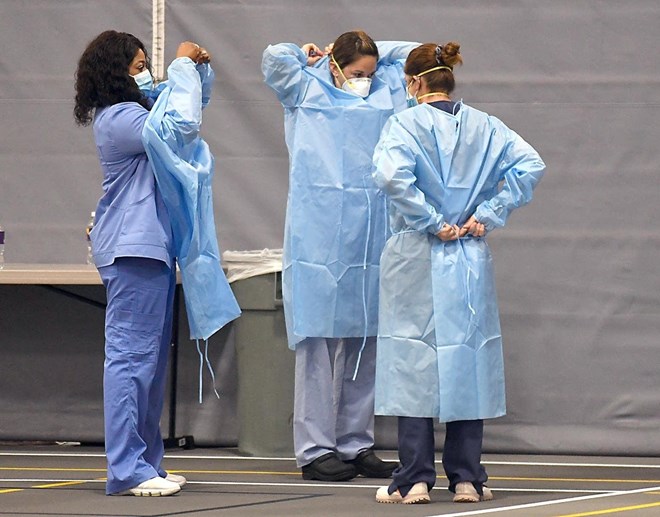
Thursday November 5, 2020

Another day, another set of grim records broken in Minnesota’s COVID-19 pandemic.
The Health Department Wednesday reported 3,844 newly confirmed or probable cases of the disease — a new one-day high, breaking the prior record set Tuesday following a succession of new highs in the past week.
Some 900 people are in Minnesota hospital beds now due to COVID-19, with more than 200 needing intensive care, both near record highs; 31 more people died.
The seven-day average now is over 3,000 newly reported cases per day, twice what it was two weeks ago. Minnesotans should brace themselves to see 4,000 cases a day in the near future, Health Commissioner Jan Malcolm told reporters Wednesday.
“What’s happening now in Minnesota is disheartening and alarming,” she said, comparing the spread to a wildfire. “It feels like we’re losing ground. We’re falling behind the rapid spread of this virus.”
She again implored Minnesotans to take more responsibility to stem the spread by wearing masks in public gathering spaces, socially distancing and staying home if you don’t feel well.
“Gathering in a group of people is risky right now,” she said.
Casual gatherings driving spread
The newest numbers continue to show rampant spread across Minnesota, not limited to just one region or demographic group. like earlier in the pandemic.
It’s being driven now by Minnesotans’ informal gatherings and get-togethers with family and friends where it’s spread unknowingly by people who have the virus but do not have symptoms, officials say.
Wednesday’s data showed another record of active confirmed cases, more than 20,000.
Hospital capacity is tight as cases grow. Intensive care beds in the Twin Cities metro area are now at about 98 percent capacity; statewide, it’s a little less, state infectious disease director Kris Ehresmann said Wednesday.
Of the 160,923 cases of the disease confirmed in the pandemic to date, about 85 percent have recovered to the point they no longer need to be isolated.
The deaths reported Wednesday raised Minnesota’s toll to 2,530. Among those who’ve died, about 70 percent had been living in long-term care or assisted living facilities; most had underlying health problems.
‘Minnesota is in a bad spot’
The overall numbers continue to paint a troubling picture of a rapidly worsening pandemic in Minnesota.
Caseloads have skyrocketed over the past few weeks, bringing a surge of hospitalizations and deaths.
State authorities had worried that late summer and early fall gatherings, sporting events and informal get-togethers would drive an October surge as Minnesotans let down their guard against the virus. That happened, and it’s now spilling into November.
“Minnesota is in a bad spot … and it’s going to get worse before it gets better,” Ehresmann told reporters Monday as she implored Minnesotans to wear masks in public gathering spaces, socially distance and take other measures to stem the spread.
The state’s positive test rate trend is running at 12.3 percent over the past week, nearly three times higher than a month ago.
While more testing is uncovering more cases, “it’s not the testing that’s the problem,” Ehresmann said. “It’s the sheer fact that we have so much virus circulating in our state.”
Caseloads rising across age groups
New cases are up dramatically over the past month in all age groups.
People in their 20s still make up the age bracket with the state’s largest number of confirmed cases — more than 34,000 since the pandemic began, including 18,999 among people ages 20-24.
New Minnesota COVID-19 cases by age, adjusted for population
The number of high school-age children confirmed with the disease has also grown, with more than 13,500 total cases among children ages 15 to 19 since the pandemic began.
Those numbers help explain why experts remain particularly concerned about teens and young adults as spreaders of the virus.
While less likely to feel the worst effects of the disease and end up hospitalized, experts worry youth and young adults will spread it to grandparents and other vulnerable populations. It’s especially concerning because people can have the coronavirus and spread COVID-19 when they don’t have symptoms.